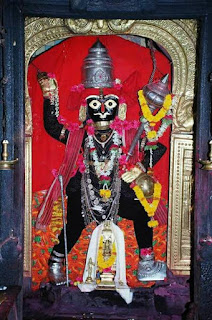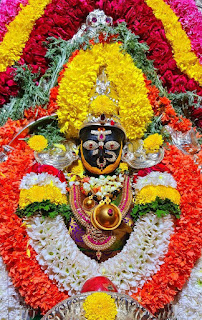
SRI APATSAHAYESWARAR, ALANGUDI (TN) Navgraha kshetram dedicated to Shiva and where Sri Dakshinamurthy is worshipped as Guru Bhagwan (Jupiter/Brihaspati). The shrine is renowned for its tri-glories, i.e. Moorthy, sthalam and theertham (Holy Water). This place is believed to be the one where Shiva consumed the deadly poison (Ala Visham) that came out after samudra manthan. Hence, Shiva came to be called Apatsahayesvarar (One who defends from danger). Kshetram is believed to have been constructed by Amuthokar (a Shiva bhakt). He was the minister of King Masukuntha Chakravarti and was beheaded as he refused to give half of his Punya (merit) to the King. On his death, the sthalam reverberated with the sound ‘Amuthokar’. Frightened King prayed to Apatsahayeswarar and was relieved from all Doshas. Alangudi is surrounded by 3 holy rivers-Cauvery, Kolidam and Vennaru. Fifteen theerthams are around this kshetram. Amrita Pushkarani encircling the Kshetram is very famous. Chakra theertham in ...




